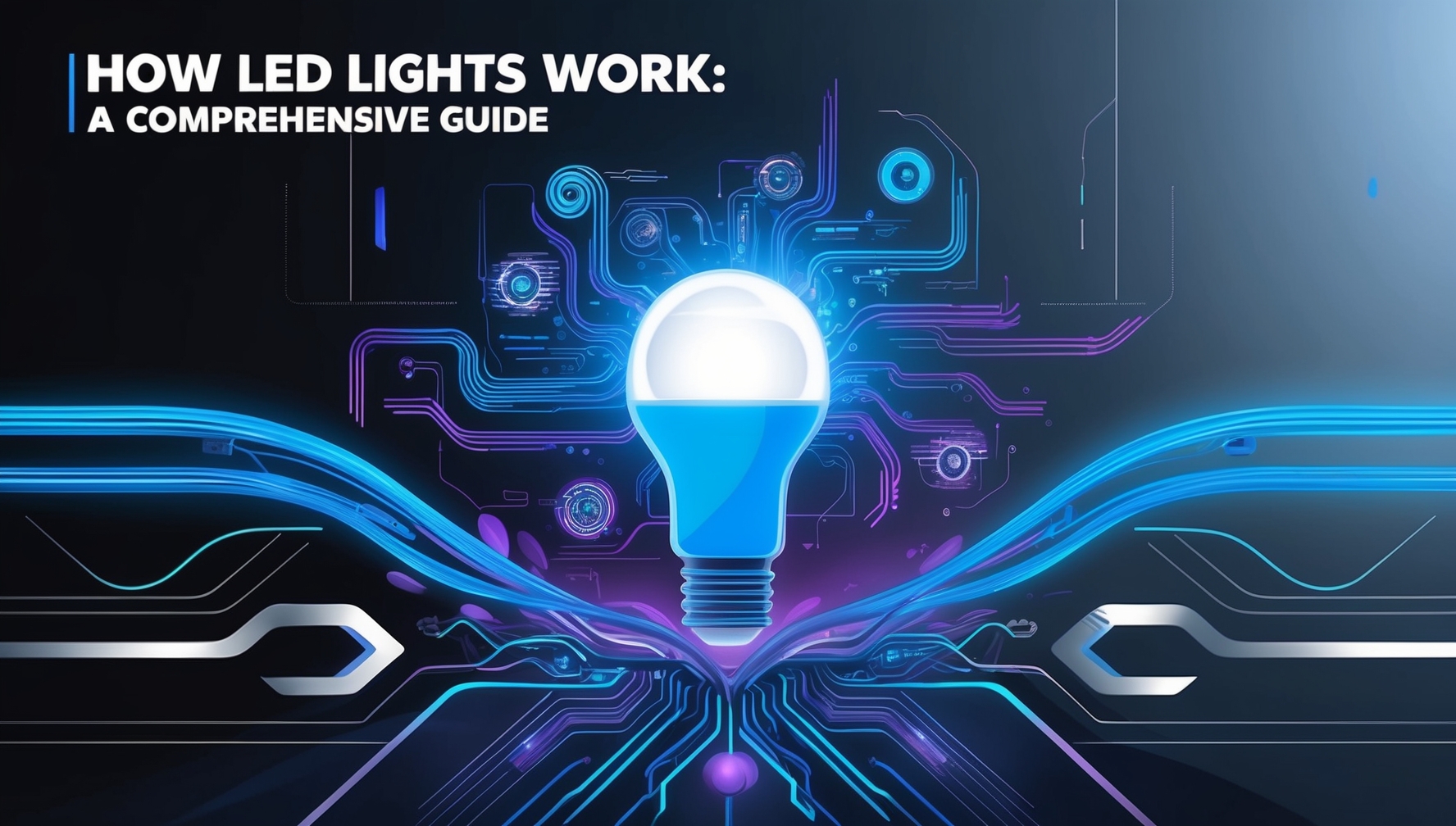LED (Light Emitting Diode) lights have revolutionized the way we illuminate our world. Known for their energy efficiency, long lifespan, and versatility, LEDs have become the preferred choice for a wide range of applications, from household lighting to industrial uses. The evolution of LED technology has driven these advancements, transforming lighting solutions over the past few decades. But how exactly do LED lights work? This guide delves into the science behind LEDs, explaining the principles, components, and processes that make these lights function.
The Basic Principle: Electroluminescence
At the heart of LED technology is a phenomenon known as electroluminescence. This is the process by which a material emits light in response to an electric current passing through it. In an LED, this material is a semiconductor, typically made from a combination of elements like gallium, arsenic, and phosphorus.
When a voltage is applied across the LED, electrons in the semiconductor material are excited and move across the junction between two regions called the p-type and n-type layers. As these excited electrons recombine with “holes” (the absence of an electron) in the p-type layer, energy is released in the form of photons, which we perceive as light. The color of the light depends on the energy gap of the semiconductor material, which determines the wavelength of the emitted photons.
Key Components of an LED
Several components work together to make an LED function effectively:
- Semiconductor Chip: The core of the LED, where light is generated. This chip is made from materials that have specific properties to emit different colors of light.
- Lens and Reflector: These elements shape and direct the light emitted by the semiconductor chip. The lens often focuses the light, while the reflector ensures that as much light as possible is emitted in the desired direction.
- Heat Sink: LEDs generate heat during operation, which can affect performance and lifespan. The heat sink is a crucial component that dissipates this heat, maintaining the LED’s efficiency and longevity.
- Circuit Board: The LED is mounted on a circuit board that provides the necessary electrical connections and often incorporates the heat sink. The circuit board may also include drivers that regulate the current flowing to the LED.
LED Light Colors and Phosphors
One of the distinguishing features of LEDs is their ability to produce light in a variety of colors. This is achieved by using different semiconductor materials. For example, a red LED typically uses aluminum gallium arsenide, while a blue LED uses gallium nitride.
White light LEDs are a bit more complex. They are usually created by either combining red, green, and blue LEDs or by coating a blue LED with a phosphor material that converts some of the blue light into yellow. The combination of blue and yellow light creates the appearance of white light. Phosphors can be tuned to produce different shades of white, from cool to warm tones.
Advantages of LED Lights
LED lights offer several advantages over traditional lighting technologies:
- Energy Efficiency: LEDs use significantly less energy compared to incandescent or fluorescent bulbs, as they convert more electricity into light and less into heat.
- Longevity: LEDs have a much longer lifespan, often lasting up to 25,000 hours or more, reducing the need for frequent replacements.
- Durability: LEDs are solid-state lights, meaning they are more resistant to shock, vibration, and wear compared to other types of lighting.
- Environmentally Friendly: LEDs contain no mercury or other hazardous materials and are fully recyclable.
How LED Drivers Work
LEDs require a specific type of power supply called an LED driver. Unlike incandescent bulbs, which operate directly on alternating current (AC) from the power grid, LEDs typically run on direct current (DC). The LED driver converts AC power to DC and regulates the current to ensure consistent brightness and prevent damage to the LED.
Some LED systems include dimmable drivers that allow users to adjust the light output. These drivers modulate the current flowing to the LED, enabling smooth dimming without flickering.
The Future of LED Technology
As LED technology continues to advance, we can expect even more efficient and versatile lighting solutions. LEDs in smart lighting systems are becoming increasingly popular, allowing for seamless integration with home automation and smartphone controls. Innovations such as smart LEDs, which can be controlled via smartphones and integrated with home automation systems, are already making their way into the market. Additionally, new materials and designs are being developed to improve LED performance, reduce costs, and expand their applications.
Conclusion
Understanding how LED lights work provides insight into why they have become the dominant lighting technology in today’s world. From the basic principles of electroluminescence to the intricate components and materials involved, LEDs represent a significant leap forward in lighting efficiency, durability, and versatility. As research and development continue, LEDs will undoubtedly play an even more critical role in our daily lives, illuminating everything from our homes to our cities.
